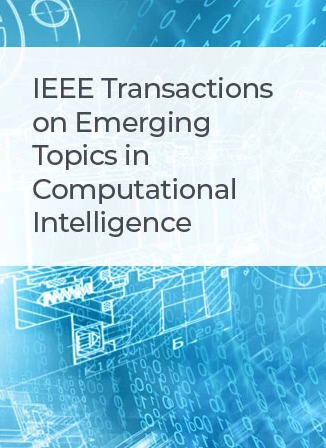PCDAL: A Perturbation Consistency-Driven Active Learning Approach for Medical Image Segmentation and Classification
IF 5.3
3区 计算机科学
Q1 COMPUTER SCIENCE, ARTIFICIAL INTELLIGENCE
IEEE Transactions on Emerging Topics in Computational Intelligence
Pub Date : 2025-03-18
DOI:10.1109/TETCI.2025.3547635
引用次数: 0
Abstract
In recent years, supervised learning using convolutional neural networks (CNN) has served as a benchmark for various medical image segmentation and classification. However, supervised learning deeply relies on large-scale annotated data, which is expensive, time-consuming, and even impractical to acquire in medical imaging applications. Moreover, effective utilization of annotation resources might not always be feasible during the annotation process. To optimize the utilization of annotation resources, a proposed active learning framework is introduced that is applicable to both 2D and 3D segmentation and classification tasks. This framework aims to reduce annotation costs by selecting more valuable samples for annotation from the pool of unlabeled data. Based on the perturbation consistency, we apply different perturbations to the input data and propose a perturbation consistency evaluation module to evaluate the consistency among predictions when applying different perturbations to the data. Subsequently, we rank the consistency of each data and select samples with lower consistency as high-value candidates. These selected samples are prioritized for annotation. We extensively validated our proposed framework on three publicly available and challenging medical image datasets, Kvasir Dataset, COVID-19 Infection Segmentation Dataset, and BraTS2019 Dataset. The experimental results demonstrate that our proposed framework can achieve significantly improved performance with fewer annotations in 2D classification and segmentation and 3D segmentation tasks. The proposed framework enables more efficient utilization of annotation resources by annotating more representative samples, thus enhancing the model's robustness with fewer annotation costs.一种微扰一致性驱动的医学图像分割与分类主动学习方法
近年来,使用卷积神经网络(CNN)的监督学习已经成为各种医学图像分割和分类的基准。然而,监督学习严重依赖于大规模的注释数据,这在医学成像应用中是昂贵的,耗时的,甚至不切实际的。此外,在注释过程中,对注释资源的有效利用可能并不总是可行的。为了优化标注资源的利用,提出了一种适用于二维和三维分割分类任务的主动学习框架。该框架旨在通过从未标记数据池中选择更有价值的样本进行注释来降低注释成本。在扰动一致性的基础上,我们对输入数据施加不同的扰动,并提出了扰动一致性评价模块来评价不同扰动下预测之间的一致性。随后,我们对每个数据的一致性进行排序,并选择一致性较低的样本作为高值候选。这些选定的样本将优先进行注释。我们在三个公开可用且具有挑战性的医学图像数据集Kvasir数据集、COVID-19感染分割数据集和BraTS2019数据集上广泛验证了我们提出的框架。实验结果表明,在二维分类分割和三维分割任务中,我们提出的框架可以在较少注释的情况下显著提高性能。该框架通过标注更具代表性的样本,能够更有效地利用标注资源,从而以更少的标注成本增强模型的鲁棒性。
本文章由计算机程序翻译,如有差异,请以英文原文为准。
求助全文
约1分钟内获得全文
求助全文
来源期刊

IEEE Transactions on Emerging Topics in Computational Intelligence
Mathematics-Control and Optimization
CiteScore
10.30
自引率
7.50%
发文量
147
期刊介绍:
The IEEE Transactions on Emerging Topics in Computational Intelligence (TETCI) publishes original articles on emerging aspects of computational intelligence, including theory, applications, and surveys.
TETCI is an electronics only publication. TETCI publishes six issues per year.
Authors are encouraged to submit manuscripts in any emerging topic in computational intelligence, especially nature-inspired computing topics not covered by other IEEE Computational Intelligence Society journals. A few such illustrative examples are glial cell networks, computational neuroscience, Brain Computer Interface, ambient intelligence, non-fuzzy computing with words, artificial life, cultural learning, artificial endocrine networks, social reasoning, artificial hormone networks, computational intelligence for the IoT and Smart-X technologies.
 求助内容:
求助内容: 应助结果提醒方式:
应助结果提醒方式:


